Guide:Starting Your Adventure
Starting Your Adventure is a guide for new players of Palia. It will not cover every single thing about the game, but rather it is intended to hopefully make the first few steps into this world a little easier.
Welcome to Palia!
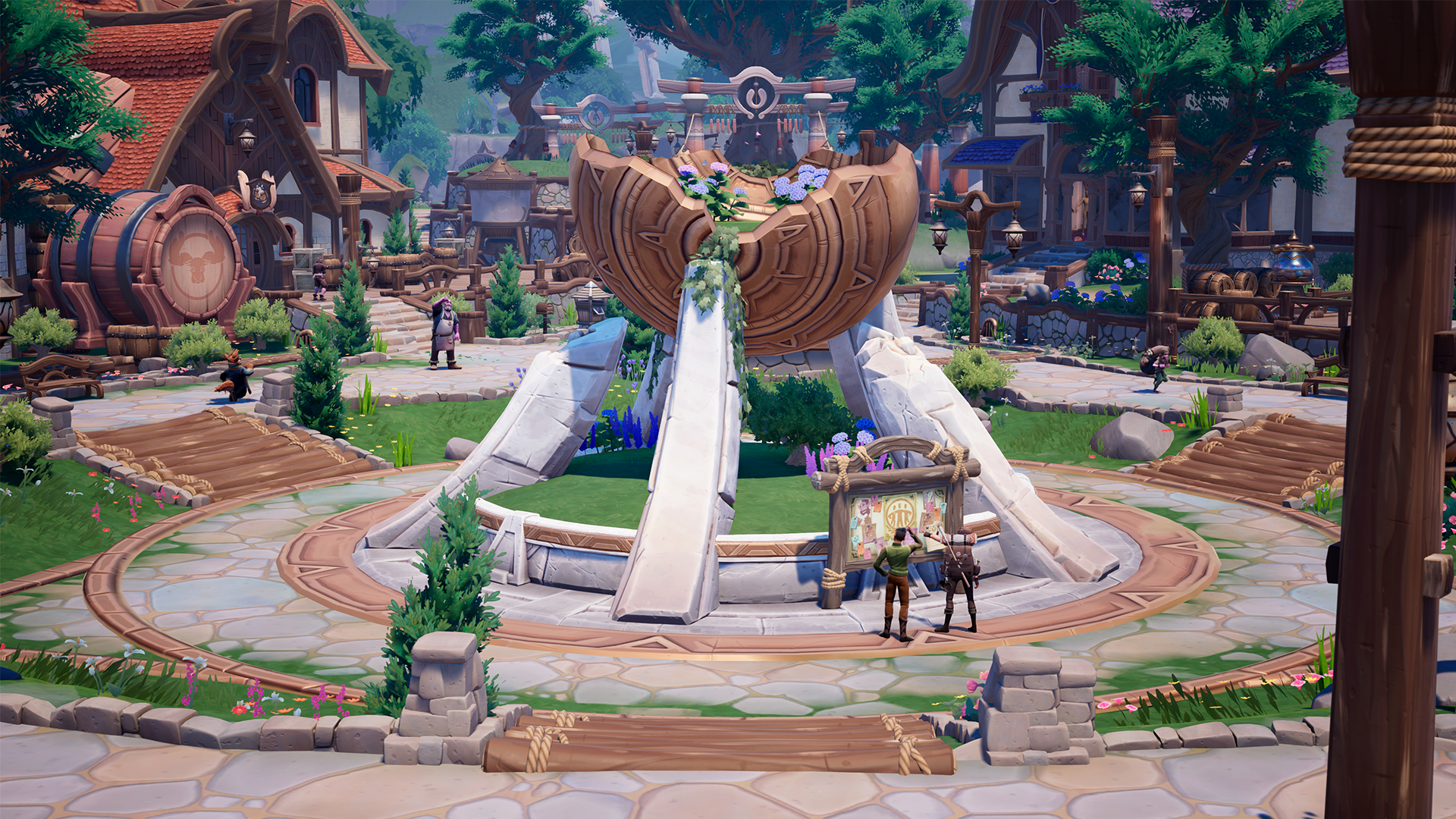
Palia (pronounced pay-lee-uh) is a world of sprawling flower fields, hilly forests and rocky beaches. You are invited to join this cozy community sim that promises to be an enchanting adventure filled with colorful characters, vibrant landscapes and a deep, evolving story.
The core gameplay loop focuses on developing a myriad of skills and improving them to contribute to building your very own comfy home.
Above all, the social and cooperative aspects of gameplay in Palia aim to provide a real sense of community and belonging. While Palia can certainly be played and enjoyed by a solo player, playing with others is definitely encouraged.
Before embarking on this new adventure, a review of both the Community Guidelines and Palia's Player Code of Conduct is strongly recommended.
Starting Your Adventure
After you have downloaded and successfully launched the game, it is time to take that first step!
Character Creation
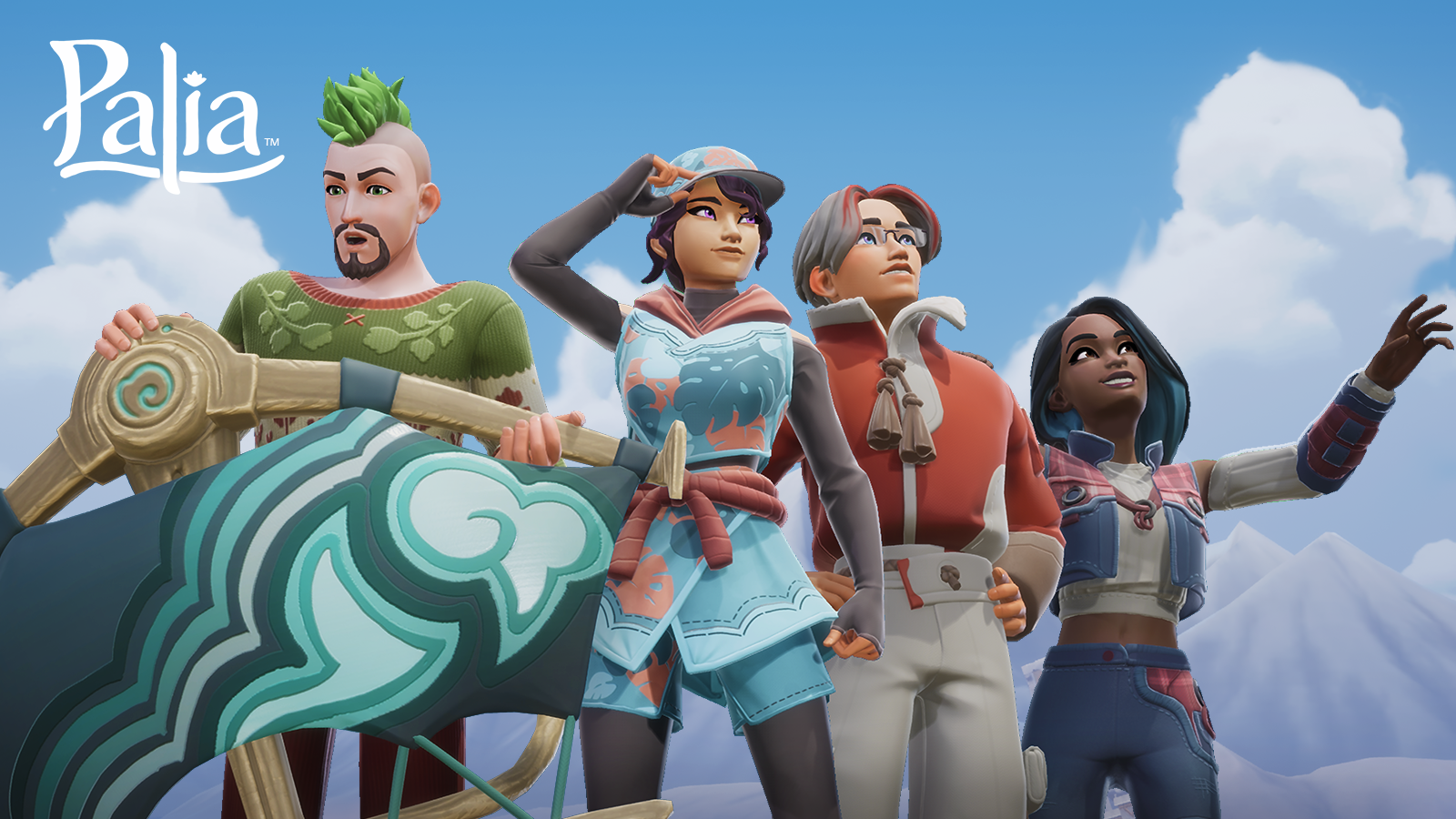
The Character Creation screen allows you to customize various traits of your character including body type, facial features, skin tone, voice and hairstyles. You can also select your character's outfit. In the end, no matter what your characters looks like, every choice you make can be changed in-game once a week, using the large mirror inside the Tailor shop in Kilima Village.
Once your character's appearance has been finalized and confirmed, you will be prompted to provide both a Name and a Nickname. To protect your privacy, do not use your real name!
The Character Name is what other players will see above your character's head in-game. Character names are used to add other players as friends and exchange resources via the Social Panel. It is also the name used to identify players in the In-Game Chat.
The Character Nickname is the name that Villagers will use when engaging your character during quests and general conversation. It is typically a shortened version of the Character Name, but can be something else. For example, "Mel" could be the nickname for "Melissa Shroomer". Alternatively, "Big Brother Bob" could use "Bubba" as his nickname.
Tutorial
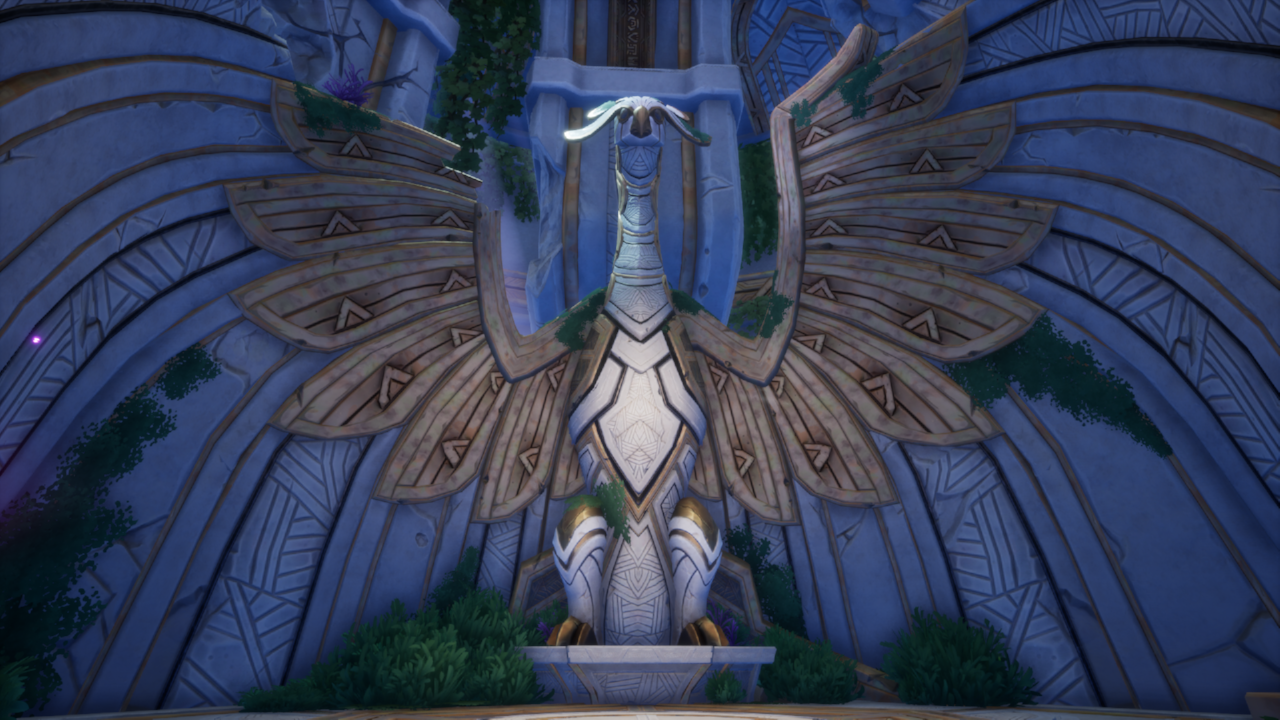
After character creation has been successfully completed, you will be prompted to enter Palia for the first time.
Upon entering the game, and after a brief cutscene, the ![]() Welcome to Palia introductory Questline will automatically begin.
Welcome to Palia introductory Questline will automatically begin.
This series of tasks serves as a tutorial that will guide you through learning how to move your character around, acquire Skills and Tools and how to use them, as well as establish your very own Housing Plot.
Basic Game Controls
While working your way through the tutorial, be sure to take some time to review your settings and adjust keybindings to what suits you best. You can do this in the in the Settings window under Control Settings.
Some of the more basic movement controls are as follows:
| Action | PC | Switch |
|---|---|---|
| Move Forward | / | |
| Move Left | / | |
| Move Backward | / | |
| Move Right | / | |
| Sprint | ||
| Jump & Glide | to jump | |
| Walk | ||
| Auto Run | + |
Player Menu
One of your top priorities should be getting familiar with the Player Menu, accessed by using key ( for Switch).
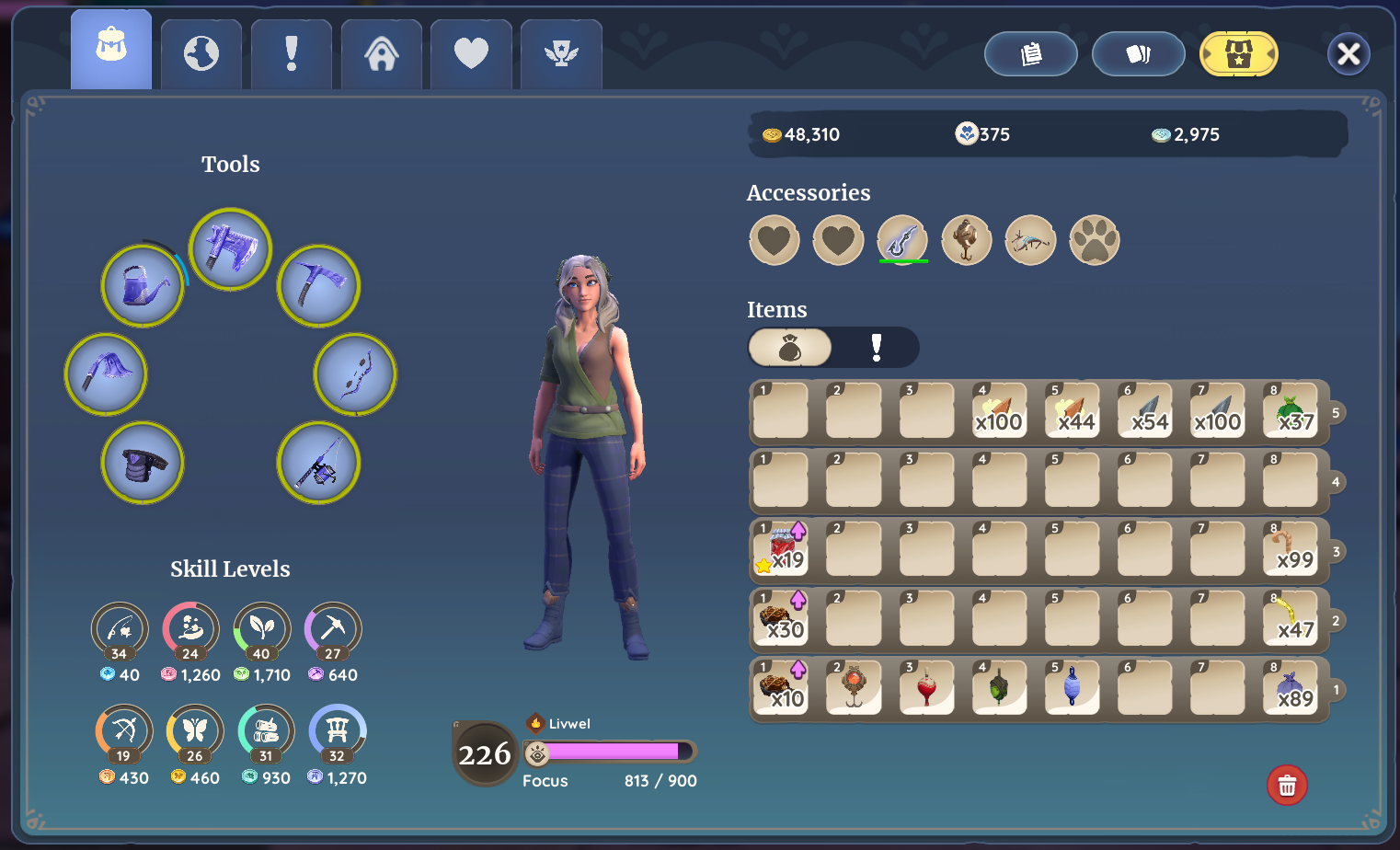
This menu gives you quick access to multiple tabs, each having its own hotkey, and are as follows:
| Tab Name | PC | Switch | Description |
|---|---|---|---|
| Inventory Tab | / | , hover "Inventory", then | Shows current status of Skills, Tools, Inventory, Accessories, Currency and much more. |
| Map Tab | Shows overview Map of current location, including Legend and Return to Housing Plot button that is usable at no cost, once every 30 real-life minutes. | ||
| Quests Tab | , hover "Quests", | Lists currently active and completed Quests, including description, current objectives and rewards. | |
| Community Tab | , hover "Communities", then | Join, create or view information about Community, tab appearance and available options will change, depending on membership status. | |
| Relationships Tab | , hover "Relationships", then | Lists relationship levels and rewards of Villagers, also includes a Gifting tracker. | |
| Accomplishments Tab | , hover "Accomplishments", | Lists currently active and completed Accomplishments along with Weekly Challenges, if applicable. |
There are also 3 buttons in the upper-right corner of the Player Menu.
- News - This panel is for messages that come directly from Singularity 6. These can include items received through Twitch Drops and Login Rewards.
- Collections - This panel covers Emotes and Pets.
- Premium Store - This panel allows access to premium clothing and Palia Coins.
Home Sweet Home
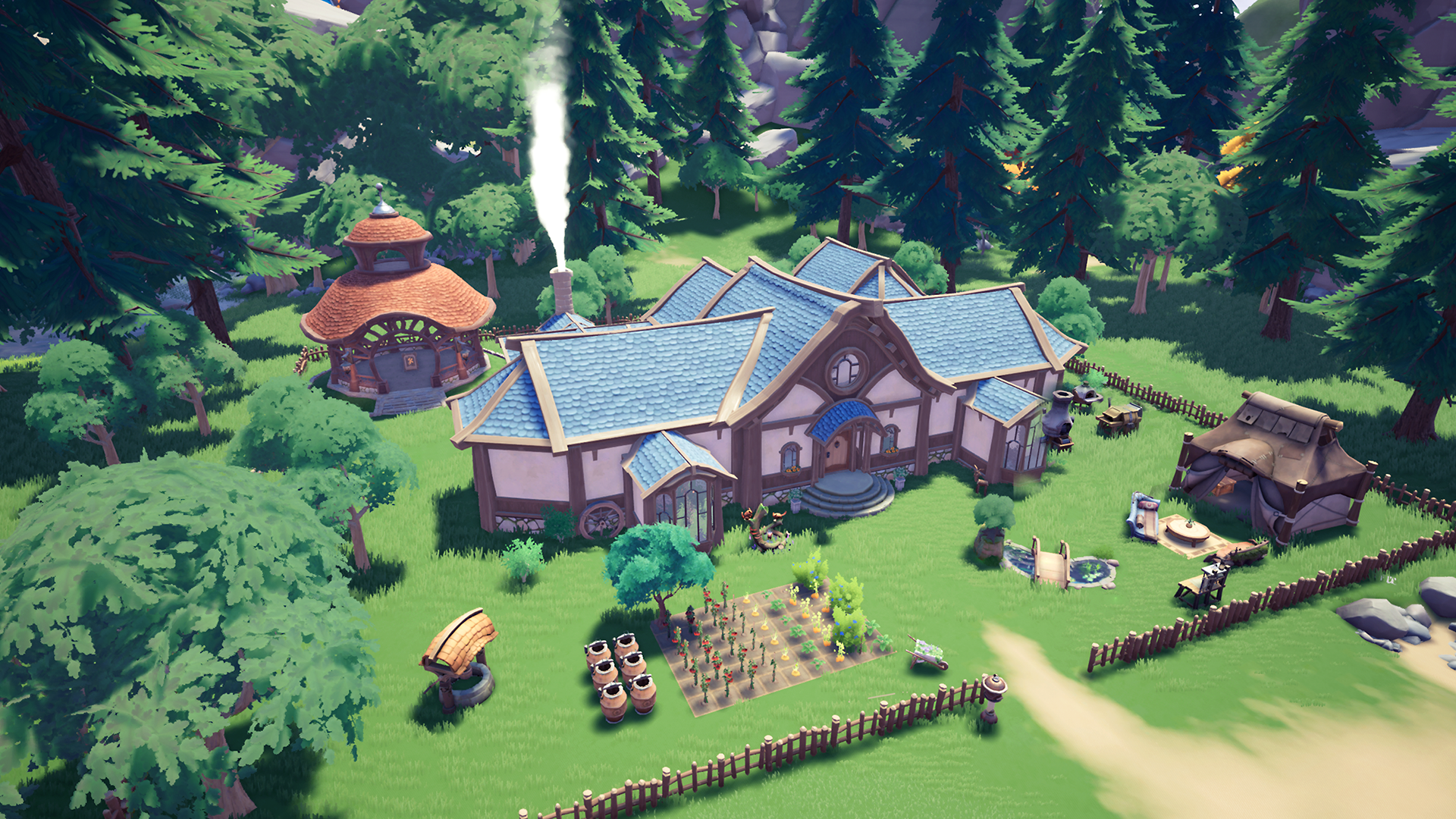
After completing the introductory questline, you will be the proud owner of a Housing Plot. As you continue with your questing and exploration, you will come to realize that your Housing Plot is a key element in your day to day activities in Palia. Just about every thing you do in the game helps to perpetuate the development of your plot and more than likely you will be visiting your plot quite often, even if only to pass through it as a means to get from one zone to the other a little quicker. But what do you do on your plot?
First things first, there is no right or wrong way to go about setting up your plot. There is only "what works for you". With that in mind set your housing goals to align with your play style.
If you like decorating, then work to unlock new Furniture recipes, use your Skills to gather crafting materials and then craft all the pieces you would like to put in your home. If you enjoy the challenge of creating profitable Garden layouts that minimize the labor required for maximum yields, draft up a watering and replanting schedule and start planting. If you have a fascination with landscaping, you should spend time Foraging for tree seeds and Bug Catching for flower seeds, and then fill up your plot with all manner of flora. And if you are a plushie enthusiast...well, you have your work cut out for you, but good luck!
These are just a few examples, so take your time, chat with others about what works for them and then have fun building the home that is right for you.
Notable Features
While decorating your home is a great part of the appeal of having a Housing Plot, that is definitely not all there is to it. Below is a brief look at some of the notable features that are available to you, once you have gained access to your plot.
| Feature | Description |
|---|---|
| Mailbox | The Mailbox is utilized by Villagers as a means of communicating messages or shipping items to you. Mail is delivered each in-game day at 6:00 AM and 6:00 PM (Paila Time) |
| Shipping Bin | You can place sellable items inside the Shipping Bin. The bin is emptied each in-game day at 6:00 AM and 6:00 PM (Paila Time). The total sales earned from sold items will be given to you on your next visit to the plot. |
| Storage Chests | Once you are able to craft Storage Chests, you can unlock access to General Storage and Safe Storage. Use these to free up space in your Inventory. |
| Pond | While Fishing hot spots will not spawn on the plot, the pond is a convenient source of4 Fish you can use for cooking or sell for |
| Zone Access | The main gate to the south allows access to Kilima Valley. The gate to the north, at the abandoned mine, allows access to the northern region of Bahari Bay. |
Discovering the World
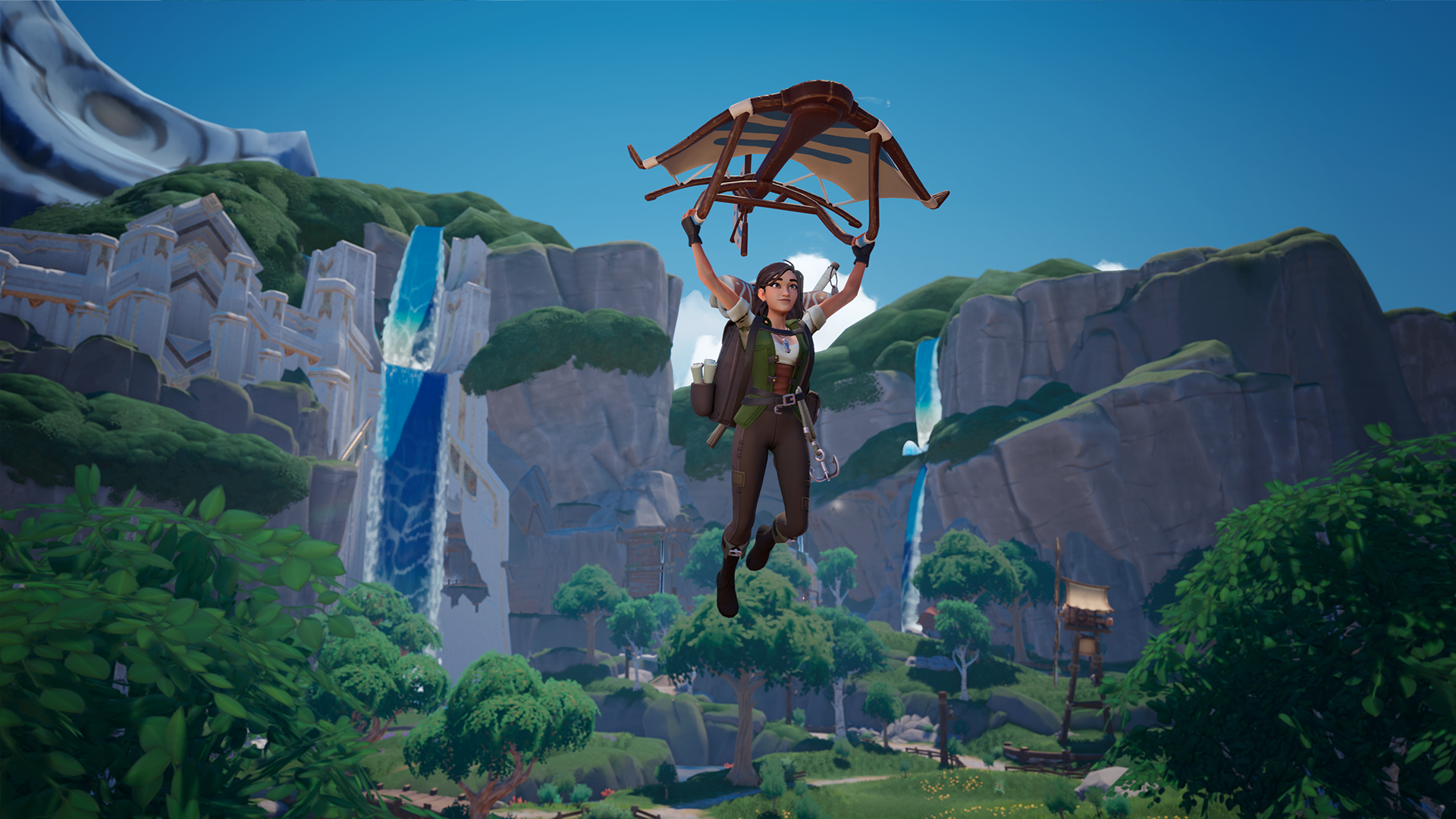
Now that your home is established, you have learned a bunch of new skills and you are ready to head back out into the open world, the real adventure begins. How you go about things is completely up to you. Focus on your quests, work on your skills or...just go exploring!
One thing you will definitely want to get your hands on is a Glider. This invaluable asset will not only put plenty of wind in your hair, but will help you get to otherwise unreachable areas. That is an important thing of note, when you consider that there are numerous Treasure Chests scattered throughout Palia. There is no doubt that your glider will ensure that you are able to collect each and every one of them.
There are currently two major zones to explore in Palia, each with its own distinctive landmarks, flora and fauna. While certain quests will guide you to various locations in Palia, there is plenty to see and do while freely roaming around the world.
Kilima Valley
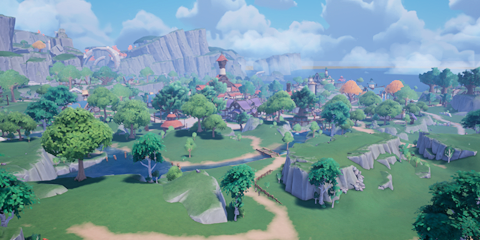
Kilima Valley is the starting zone for new players. When first entering the game, you will be situated in the northernmost part of the valley called Phoenix Falls. From there you will be guided southward to Kilima Village, the main hub of activity in Palia. It is in the village where the majority of Stores can be found, each with its own specialized services, such as the Repair Station in the Blacksmith.
Within the valley, there are a number of Ancient Human Ruins, bodies of water including Fisherman's Lagoon and even a path to the Fairgrounds that hosts limited-time events, such as Maji Market.
At the easternmost edge of the valley is the path leading to Bahari Bay.
Bahari Bay
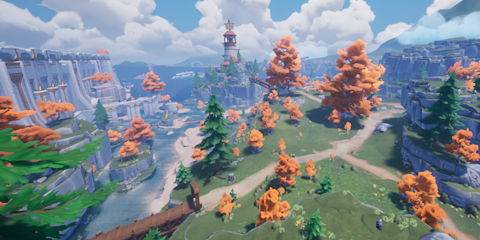
Bahari Bay is a neighboring zone of Kilima Valley. It too has its fair share of ancient ruins and is most notably divided in half by a towering wall, that effectively creates a northern and southern region for this zone.
Upon entering the bay from the valley, you will be situated in the southern region of Bahari Bay, which includes the homes of a few villagers, the Pavel Mines and The Old Lighthouse. The northern region of the bay is best known for its cascading waterfalls and being the favored grazing grounds of the Proudhorned Sernuk.
A special feature of Bahari Bay are the many geysers that can be found in the area. Riding these pillars of water, in combination with your glider, will have you reaching even greater heights and most definitely new sights.
Fast Travel

No matter where in Palia you may be, Fast Travel is a quick way to move about the world. Each zone has a number of Fast Travel boards that can be identified by the ![]() horseshoe icons on the Map interface. Simply select a location listed on the board to teleport to that location. The cost to travel from one location to another will vary, but the cheapest fare will always be to return to your own Housing Plot at the reasonable cost of
horseshoe icons on the Map interface. Simply select a location listed on the board to teleport to that location. The cost to travel from one location to another will vary, but the cheapest fare will always be to return to your own Housing Plot at the reasonable cost of ![]() 10 Gold.
10 Gold.
As noted before, opening the map gives you access to a quick travel button that will take you directly to your housing plot. From your plot, you can either leave through the southern exit to visit Kilima Valley, or you can depart via the northern exit and enter the northern region of Bahari Bay.
Instanced Areas
Aside from the open-world areas of Palia, there are some instanced zones that you can encounter. Some of these instanced areas can be accessed by you and other players at the same time, such as the Housing Plot, if you give others permission to visit you. Other areas can be solo-instances, such as villagers' private rooms and certain quest-related zones.
Meeting the Villagers

While exploring Palia, you can expect to encounter all manner of Villagers. They are primarily of the Majiri race and value tradition, hospitality and community. You will experience these values firsthand as you talk with them, take on their quests and are frequently encouraged to participate in their customs and traditions. As such, you will learn about their easy-going way of life, help them solve their day to day problems and together you will work to discover secrets and unravel the mysteries of Palia.
Daily Life
Most villagers can be found moving in and around Kilima Village, as many of them run the local Stores, manage the City Hall and frequent the Tavern. Each villager has their own daily schedule that dictates where they can be found at any given Palia Time of day. Getting familiar with a villager's habits will make it easier for you to find them when you need to turn in a quest, ask them a question or just chat.
For other villagers, you may have to travel a good distance to pay them a visit. This is especially true for those that reside in Bahari Bay. While there are a few bay residents that will make the trek to Kilima Valley themselves, it will only be at specific times of the day. This means that learning your way around the zones and making use of conveniences such as Fast Travel will definitely be to your advantage.
Relationships
By talking each Palian day with a villager, you will increase your level of Friendship with that villager. The benefits to this is two-fold. First, as you achieve a closer relationship with a villager, you will unlock special quests and unique rewards related to that villager and in the process you will learn more about their background and personal story.
Under certain circumstances, it is possible for a Romance to develop between you and some Villagers. When this happens, a flirt option becomes available while interacting with that villager. In the same way as talking with a villager each Palian day helps to raise the level of their friendship, so too does flirting with a Villager each Palian day help to raise the level of their romance. As you achieve a closer romance with a villager, you will unlock special quests and unique rewards related to that villager.
Gifting
Gifting is an additional method of raising the level of a Friendship. You can gift an item to a villager once each Palian day. You can also gift them their Weekly Wants to earn an even bigger gain in relationship progress. Not everyone enjoys receiving the same things, however, so you will have to learn what they like and dislike.
Romance gifts work in a similar fashion as other gifts, except that they are limited to either a ![]() Box of Chocolates or
Box of Chocolates or ![]() Heartdrop Lily once a week.
Heartdrop Lily once a week.
Skills
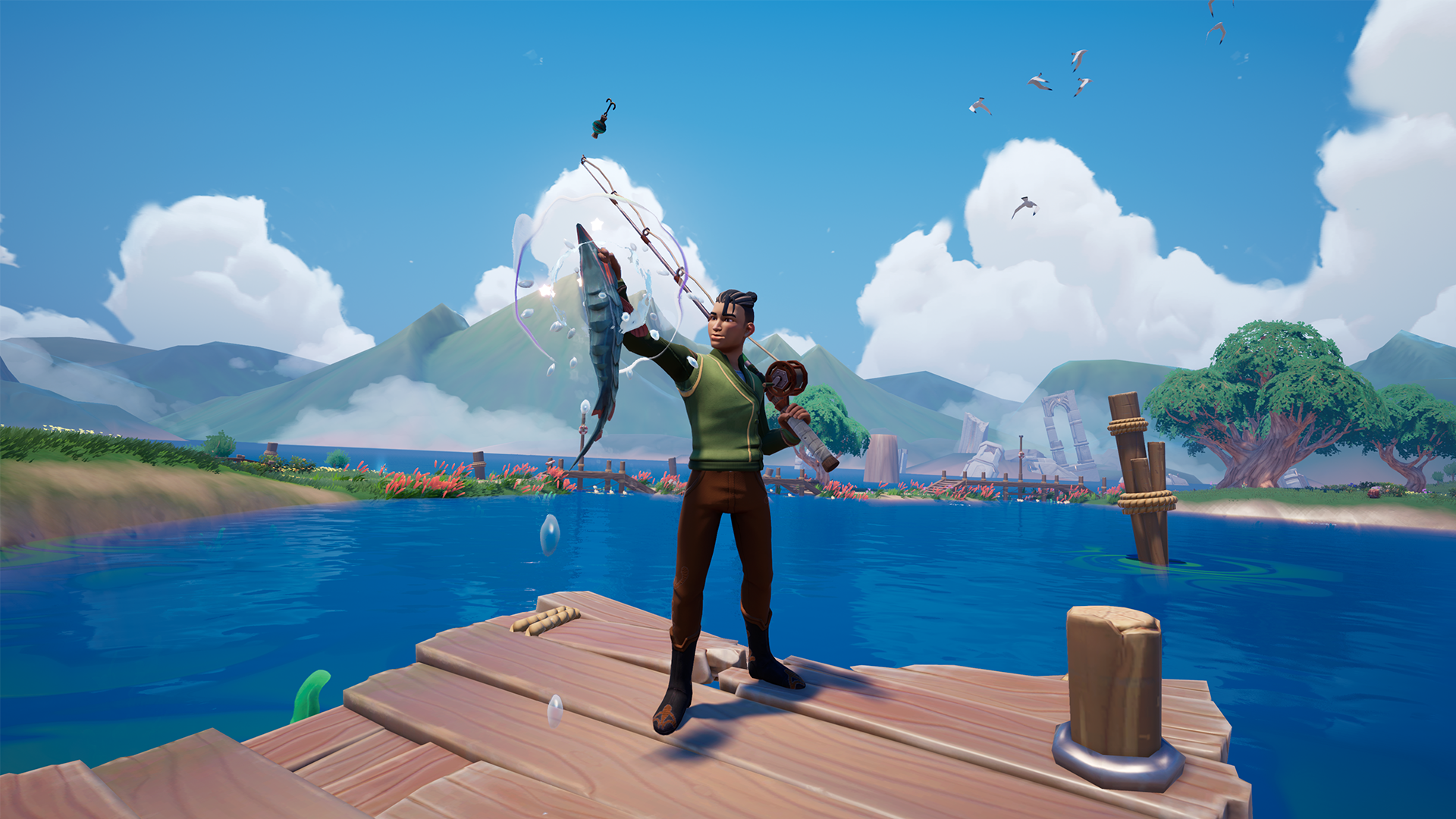
In addition to welcoming you into their daily lives, villagers play a large role in educating you about your Skills and their associated Tools. Each skill is paired with a specific villager, who provides access to that skill's Guild Store, from which you can purchase skill-related materials, recipes, etc.
You can obtain materials via one skill and use those materials for crafting via a different skill. For example, you can use Foraging to collect a number of ![]() Mushrooms and then use Cooking to make a
Mushrooms and then use Cooking to make a ![]() Grilled Mushroom. Because of this interconnection between skills, it is recommended that you strive to regularly improve all of them.
Grilled Mushroom. Because of this interconnection between skills, it is recommended that you strive to regularly improve all of them.
| Villager | Skill | Description |
|---|---|---|
| Allows you to collect Gatherables and chop down Trees. | ||
| Allows you to mine clay, stone, ores, and Starstones. | ||
| Allows you to capture Bugs. | ||
| Allows you to craft Equipment, Crafters, Tools, and a large portion of available Customization items. | ||
| Allows you to create Dishes. | ||
| Allows you to grow Crops. | ||
| Allows you to hunt all types of Chapaa, Muujin and Sernuk. | ||
| Allows you to catch Fish, Waterlogged Chests and junk. |
Weekly Challenges
Upon attaining level 10 of a skill, you unlock Weekly Challenges for that skill and the ability to earn skill medals. These medals can then be used to purchase unique items from that skill's guild store.
Basic vs Star Quality
Many items obtained and crafted using your skills have a basic version and a ![]() quality version, the latter typically being of higher value. In the cases of fish, bugs and dishes, the star quality versions of these items can be used as decorations for your housing plot.
quality version, the latter typically being of higher value. In the cases of fish, bugs and dishes, the star quality versions of these items can be used as decorations for your housing plot.
Generally speaking, lower tier materials can be collected from Kilima Valley, while higher tier materials come from Bahari Bay.
Also of note, for activities like hunting, fishing and bug catching, you will want to pay attention to both your location and the Palia Time of day. These two factors will affect the type of creatures that you can encounter at any given place and time.
Playing with Friends
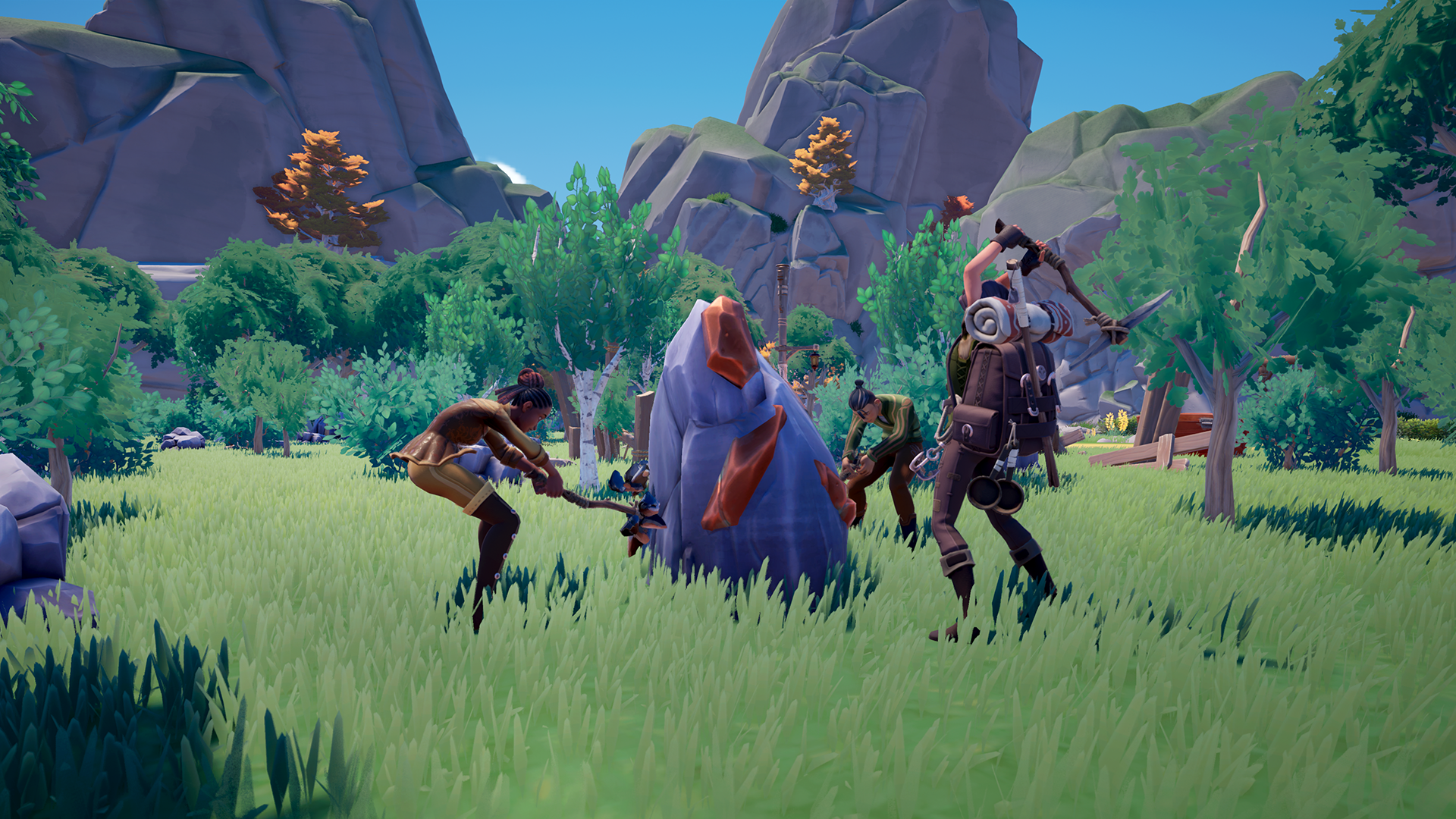
Palia is a community sim game at heart, so playing with friends is absolutely encouraged. In fact, there is a Refer A Friend incentive program especially for this reason, that allows you to earn unique rewards. To facilitate cooperative gameplay, there are a number of in-game features that make playing with friends even easier. You can utilize the Social Panel to keep up with friends in-game, add new friends, invite them to join a party and help other players through the Requests system.
You can also create a Community or join an existing one to further engage with like-minded adventurers. You can organize group events such as bug catching sprees using a ![]() Honey Lure, hunting parties for elusive rare creatures, fishing tournaments and more. While exploring new areas or enjoying event activities with friends, You can even utilize the in-game Camera feature to snap photos to memorialize each special moment.
Honey Lure, hunting parties for elusive rare creatures, fishing tournaments and more. While exploring new areas or enjoying event activities with friends, You can even utilize the in-game Camera feature to snap photos to memorialize each special moment.
Housing Plot
Your housing plot can be a private sanctuary or you can choose to let others come to visit you. These are the following plot security settings you can apply and what they allow:
- Closed - Only Villagers may visit
- Friends - Friends, Neighbors and Party Members may visit anytime you are on your plot. They can also water your garden and pick out weeds.
- Editor Permission - Friends can do the same as regular visitors, plus they can move placed furniture, turn lights on and off, etc.
Sharing Resources
As you begin collecting materials through mining, foraging and hunting, bug catching and cooking, you will notice that in many cases these resources can be shared in some manner with others. Because of this, players will often work together to hunt a rare creature or alert those nearby of a rare node or plant. If you are unsure about how to engage others in such cases, you might find this guide on Player Etiquette helpful.
Below is a listing of resources that can be shared and in what way:
| Resource | Method of Sharing |
|---|---|
| Mining Nodes | Nodes can be tagged by multiple players. Size of node determines how many hits till destroyed. After mined, a ghost node will remain for a short time, allowing additional players to collect ore. The ghost node will pulse more rapidly as its timer runs out. |
| Foraging Flowers | Much like mining nodes, once picked, a ghost flower remains for a short time, allowing additional players to collect the flower. |
| Foraging Trees | Trees can be tagged by multiple players. Size of tree determines how many hits till chopped. There are no ghosts for trees, however flow-infused trees (except the one-hit saplings) have no limit to how many players can tag them, as their health regenerates. |
| Regular Creatures | The strength of the arrows used and the version of the creature being hunted determines how many players are able to tag the same target before it is downed. |
| Magic Creatures | They have the same criteria as regular versions, but due to their larger health pools, more players can tag them. |
| Bug Catching | Much like hunting, the type of smoke bomb and rarity of bug determines how many players can tag the target before it is captured. |
| Cooking | All players who actively participate in successfully creating a dish will receive the completed dish. |
| Fishing | With fishing there is no actual sharing of fish, but players fishing near each other will grant everyone in the vicinity a fishing bonus. |
Tips and Tricks
As you learn about and grow within Palia, you will no doubt pick up tips and tricks from other players or even come up with some of your own to share with others. Below are a few that you may find convenient or advantageous:
- Is your inventory always full? Visit the General Store to see about purchasing a Backpack upgrade.
- Focus is key! Eat foods to replenish it and commune with shrines to improve both the benefits and capacity of your focus.
- Accidentally consumed an item? Hide a row of your accessible Inventory! In gameplay Settings you can set the number of "Bag Rows in Action Bar" to limit the visibility of your inventory contents, effectively preventing you from using items that are in the hidden row. Just open the Player Menu if you want to view items that are hidden rows and move them to a visible row when you are ready to use them.
- Tired of scrolling through the long list of decor in your General Storage? Move items you do not have immediate plans for into your Safe Storage. Both have unlimited decor storage, so let them share the load!
- Once each real-life day, you can purchase any item from the General Store and
 Zeki will mail you a
Zeki will mail you a  Lucky Coin. You can then redeem it at the store using Zeki's Wondrous Machine. What prize might you get?
Lucky Coin. You can then redeem it at the store using Zeki's Wondrous Machine. What prize might you get? - There are a number of daily and weekly activities you can do to earn rewards. Be sure to check out the Repeatable Events guide to make sure you do not miss out!
- If you have an active quest but the villager you need to speak with is asleep, no worries! You can still speak to them through the door of their private room.
- Been chatting with Villagers to raise your Friendship levels, but lost track of who you have already talked to? Open your Player Menu and select the Relationships tab. You will notice blue speech bubbles next to some Villager icons. This indicates they are ready to have a conversation!
- Loading Screens are more than just pretty pictures to pass the time while you wait to load up a new area. They come with helpful tips and advice too!
- Keep up to date with the latest happenings of Palia's gaming community via social media, including Twitter, YouTube and Discord.
- Want to see what fellow players are up to? Make sure to tune in to watch an Official Palia Stream Team Partner.
![]() If you found this guide helpful, please share it with other new players!
If you found this guide helpful, please share it with other new players!
| Navigation | |
|---|---|
| Villagers | |
| Skills | |
| Items | Gatherables • Bugs • Fish • Creatures • Crops • Furniture • Outfits • Treasure Chests • Bundles • Materials • Dishes • Quest Items |
| Locations | |
| Game Mechanics | The Player • Guide:Game Controls • Player Menu • Inventory • Tools • Currency • Focus • Quests • Accomplishments • Social Panel • Housing Plot • Crafters • Gifting • Friendship • Romance • Emotes |
